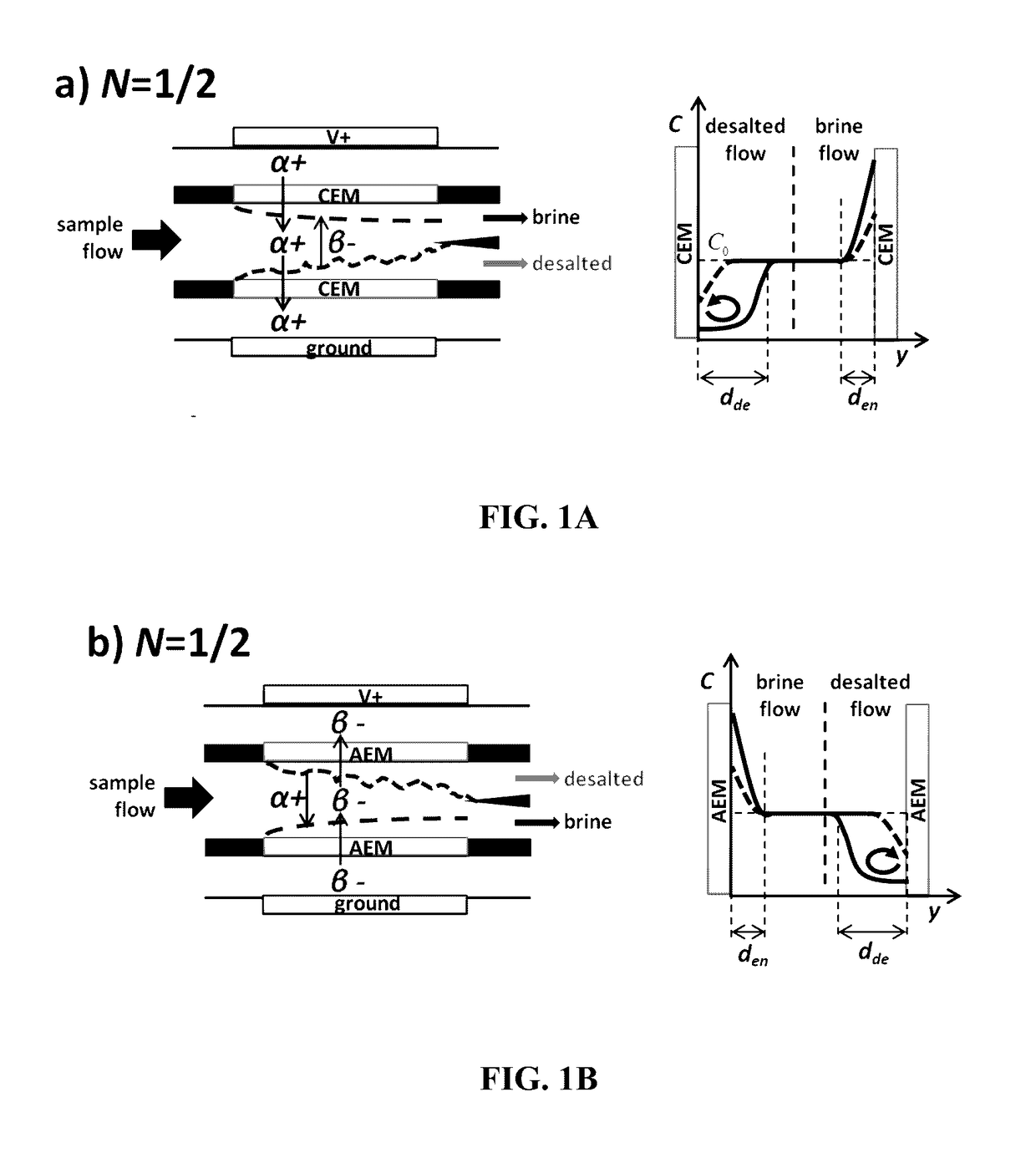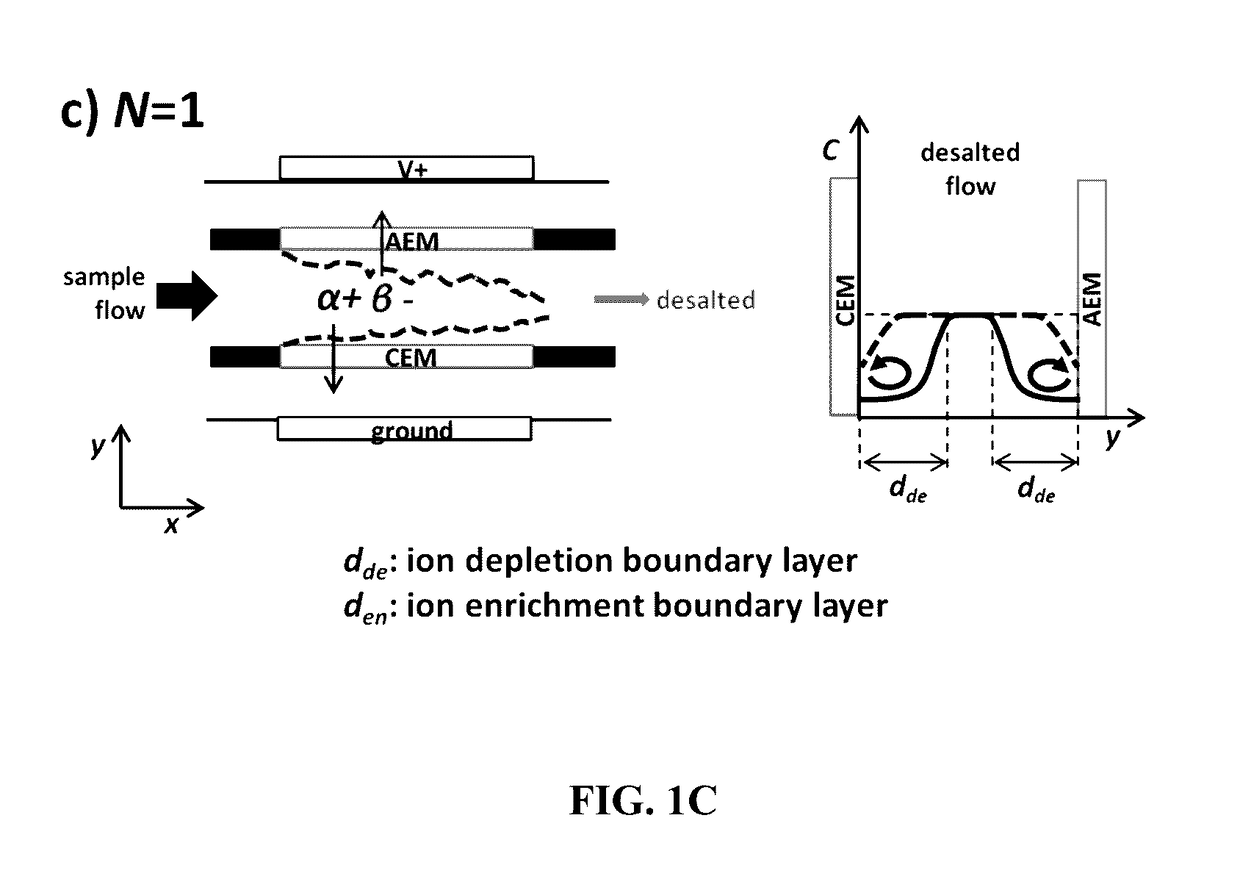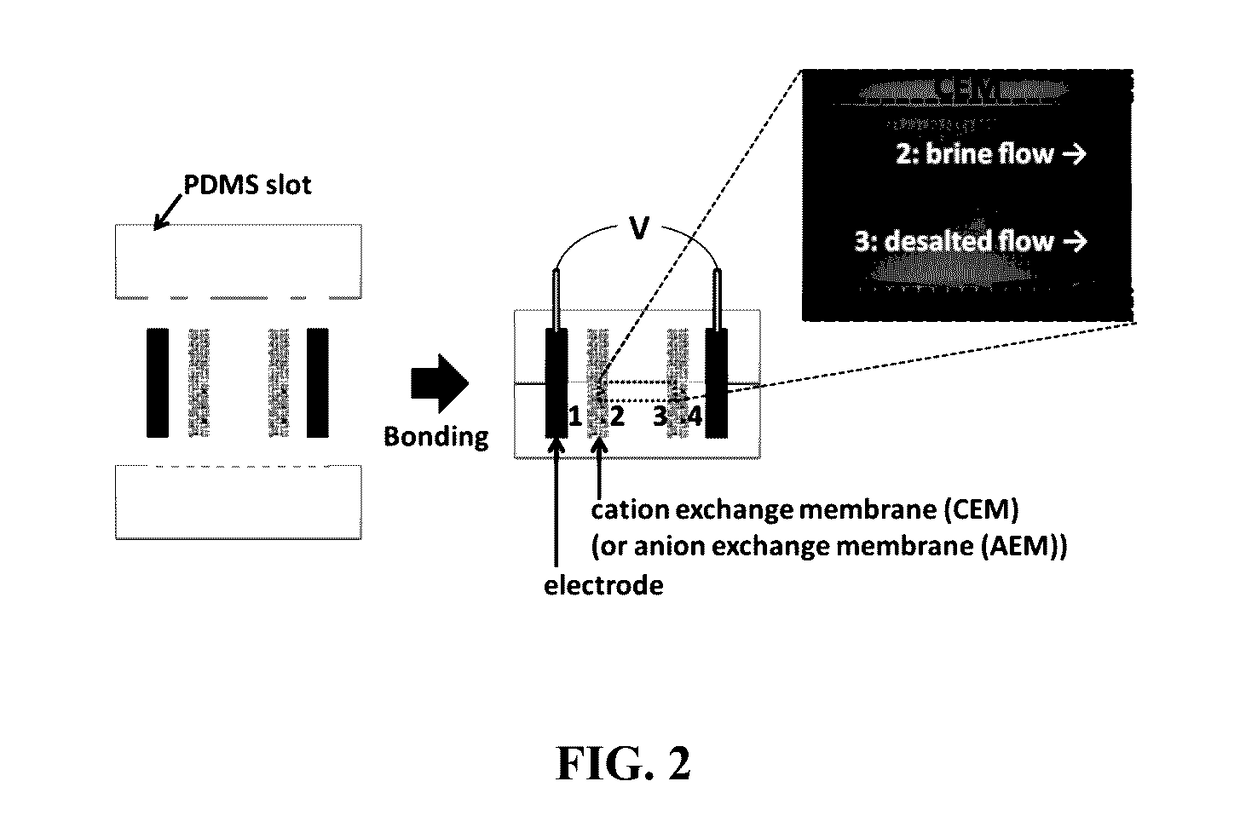Ion Concentration Polarization-Electrocoagulation Hybrid Water Treatment System
a technology of electrocoagulation and hybrid water treatment, applied in water/sewage treatment by electrochemical methods, electrodialysis, membranes, etc., can solve problems such as difficulty in scale-up, ph changes near electrodes, chemical reactions, etc., to reduce membrane fouling, high energy input, and performance largely
- Summary
- Abstract
- Description
- Claims
- Application Information
AI Technical Summary
Benefits of technology
Problems solved by technology
Method used
Image
Examples
Embodiment Construction
[0050]A description of preferred embodiments of the invention follows.
[0051]To demonstrate and characterize desalination / purification of the new platform, the sample device is fabricated by slotting IEMs and electrodes into Polydimethylsiloxane (PDMS) (FIG. 2). In 10 mM NaCl solution as a model of brackish water, fluorescent dye (Alexa Fluor 488, Invitrogen, Carlsbad, Calif.) is added to visualize ICP phenomenon. FUMASEP® FTAM-E, FTCM-E (FuMA-Tech CmbH, Germany), and carbon paper (Fuel Cell Store, Inc., Boulder, Colo.) are used as an AEM, CEM, and electrodes respectively. The detailed fabrication and operating procedures are same described in the Kwak et al. [4], incorporated herein by reference.
[0052]FIG. 3A shows the current-voltage curves and visualized ICP with fluorescent dyes between two CEMs. Typically, current-voltage response can be categorized as Ohmic (0-3 V), limiting (3-4.5 V) and overlimiting (>5 V) regimes[4]. As described by conventional convective-diffusion model[2]...
PUM
| Property | Measurement | Unit |
|---|---|---|
| length | aaaaa | aaaaa |
| length | aaaaa | aaaaa |
| inter-membrane distance | aaaaa | aaaaa |
Abstract
Description
Claims
Application Information
 Login to View More
Login to View More - R&D
- Intellectual Property
- Life Sciences
- Materials
- Tech Scout
- Unparalleled Data Quality
- Higher Quality Content
- 60% Fewer Hallucinations
Browse by: Latest US Patents, China's latest patents, Technical Efficacy Thesaurus, Application Domain, Technology Topic, Popular Technical Reports.
© 2025 PatSnap. All rights reserved.Legal|Privacy policy|Modern Slavery Act Transparency Statement|Sitemap|About US| Contact US: help@patsnap.com



